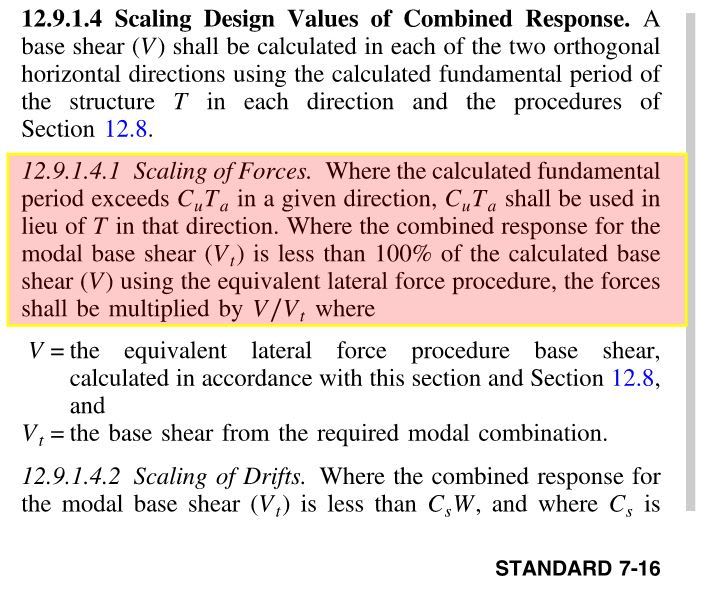BasementCarpark
Structural
- Sep 20, 2019
- 7
I just review an Etabs model from others and he adjust the stiffness modifiers for all members (wall, columns, slabs, beams) as per ACI suggestion. As per his computations, he used this model to design the vertical elements (concrete walls and columns) and retrieve the reaction to design the footings. My questions are as follows,
1. Is Adjusting the stiffness modifiers for all members and then design vertical elements accordingly safe? In my opinion, the earthquake will be reduced as the structure stiffness has been reduced and thus it will underestimate the actions on the vertical elements. Also, reducing the vertical element stiffness will underestimate the moments of them under gravity loads although beams/slabs stiffness have been reduced too but not as great as vertical moments. right?
2. In my view, the purpose of reducing the stiffness is to evaluate the story drift under lateral load. (pleas correct me if I am wrong) But as this model is just a 5 story building with core walls, I doubt the necessity to reduce the stiffness, the lateral drift won't change much any way considering it's not high rise. Also, there is no dynamic analysis (just wind and static earthquake), nor P-delta. Does this sound reasonable?
3. The retrieve the reaction from this model whose beams and slabs bending stiffness have been reduced too, will this safe for footing design considering there are two transferred flat slabs and reducing the stiffness will affect the gravity load distribution, which might be underestimation for the reaction of some columns and are more closed to transferred columns/walls above?
4. When and how do you adjust the stiffness modifiers? as far as my understanding is concerned, I will remain the modifiers to be 1 and then check the axial force of walls/columns to see if any columns/walls stress will cause crack and then amend those members if so instead of reducing the stiffness of all members.
Thank you.
1. Is Adjusting the stiffness modifiers for all members and then design vertical elements accordingly safe? In my opinion, the earthquake will be reduced as the structure stiffness has been reduced and thus it will underestimate the actions on the vertical elements. Also, reducing the vertical element stiffness will underestimate the moments of them under gravity loads although beams/slabs stiffness have been reduced too but not as great as vertical moments. right?
2. In my view, the purpose of reducing the stiffness is to evaluate the story drift under lateral load. (pleas correct me if I am wrong) But as this model is just a 5 story building with core walls, I doubt the necessity to reduce the stiffness, the lateral drift won't change much any way considering it's not high rise. Also, there is no dynamic analysis (just wind and static earthquake), nor P-delta. Does this sound reasonable?
3. The retrieve the reaction from this model whose beams and slabs bending stiffness have been reduced too, will this safe for footing design considering there are two transferred flat slabs and reducing the stiffness will affect the gravity load distribution, which might be underestimation for the reaction of some columns and are more closed to transferred columns/walls above?
4. When and how do you adjust the stiffness modifiers? as far as my understanding is concerned, I will remain the modifiers to be 1 and then check the axial force of walls/columns to see if any columns/walls stress will cause crack and then amend those members if so instead of reducing the stiffness of all members.
Thank you.





